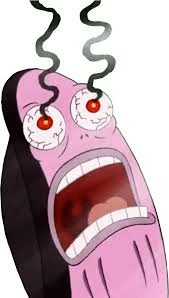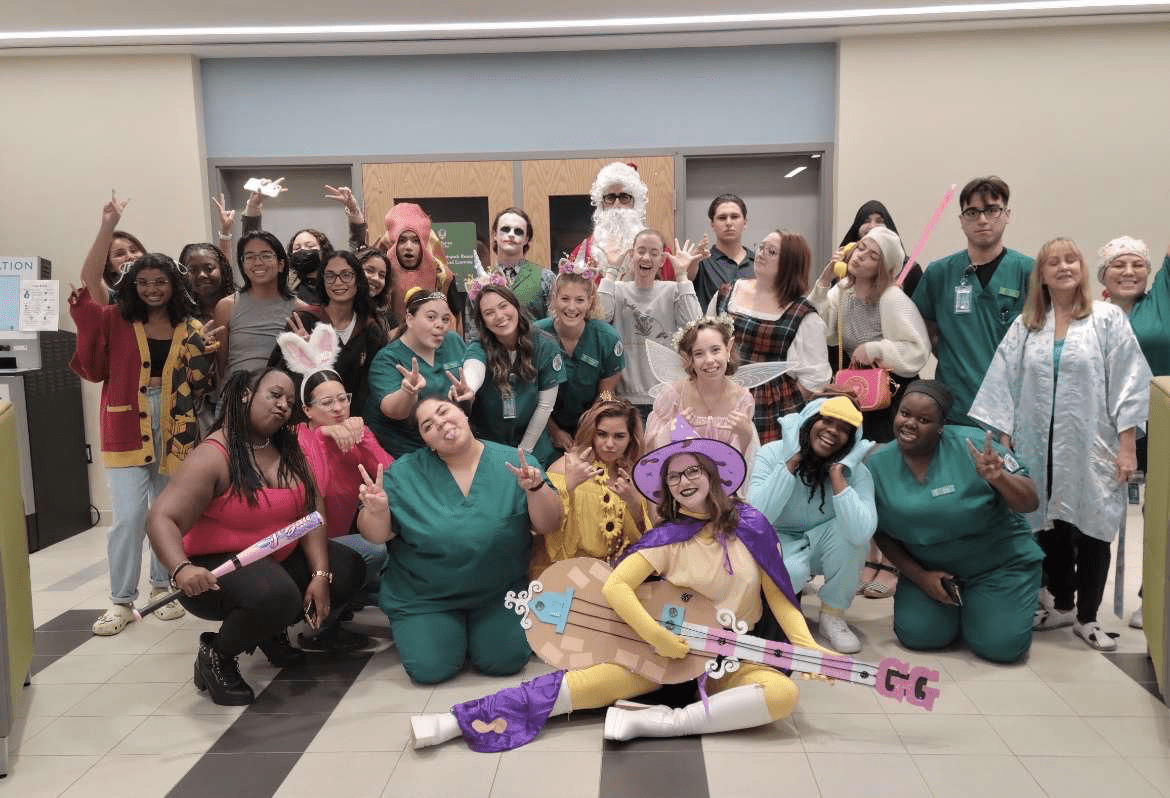Use the Snellen Test to assess and use PERRLA
Which cranial nerve am I?
Cranial Nerve 2- Optic
Mild to Moderate Pain
Acetaminophen (Tylenol)
This virus causes inflammation leading to nerve compression
Who am I?
Bell's Palsy
You have a preschool-age patient. After assessing the patient you notice the patient has the following:
brachycephaly, flat face, wide bridge, low set ears. Upon further assessment, you confirm it is Down Syndrome. What considerations would you consider?
* Safety precautions
slow to reach milestones,
weak, clumsy, tripping
This tool is utilized to categorize consciousness levels based on eye-opening, verbal
response, and motor response
Hint: Score of 15 is normal
Glasgow Coma Scale
 As Kurt stated (hey bestie where you at)
As Kurt stated (hey bestie where you at)
You would assess by holding one nostril and using coffee beans
Which cranial nerve am I?
Cranial Nerve One- Olfactory
An osmotic diuretic
Increases osmotic pressure to draw fluid from the brain tissue into the bloodstream
 Mannitol
Mannitol
A rare, autoimmune disorder characterized by ascending paralysis, often triggered by an infection
S/S: Symmetric limb weakness, paresthesia, absent reflexes, potential respiratory failure if the thoracic nerves are involved
Guillain-Barre Syndrome
What must you consistently monitor for a patient who has a concussion?
LOC
True or False:
Decorticate posturing is much more common brain injury posturing, and it is the final stage of posturing-
imminent death.
False
Decerebrate is the correct answer.
Smile as I take your picture!
Ask pt to raise eyebrows
Which nerve am I assessing for?
Facial Nerve- Cranial Nerve 7
#throwback

An Antiepileptic used to prevent and treat seizures
Phentoyin
Cranial Nerve 5
Burning, knife-like facial pain, twitching, tearing, facial grimacing, triggered by various stimuli, brief episodes lasting 2-3 minutes
Who Am I?
Trigemnial Neurlagia
How would you diagnose cerebral edema?
CT scan , MRI, and C-Spine
What is the normal range for ICP?
5-15 mm Hg
Open your mouth and say AHHHH
*You would use a tongue blade and check for *gag relfex and assess for swallowing
Which TWO cranial nerves am I?
Cranial Nerve 9 (Glossopharyngeal Nerve)
Cranial Nerve 10 (Vagus Nerve)
An Antiseizure
Given to those with chronic tension-type headaches
Topriamate
Diminished Respiratory Effort
BP: Systolic increase
Diastolic decrease
Pulse decreases, hypertension, bradycardia
Cushing's Reflex
How would you treat a Hematoma?
(Multiple Answers)
ABCs, oxygen administration, ICP management, large bore IV
access, GCS assessment (intubation if GCS < 8), and C-spine stabilization
What is important to educate your patient who is taking medications such as Phenytoin, Dilantin, or Carbamazepine?
NO grapefruitjuice or black tea 
Take with meals
Report any visual changes
You would assess facial sensation, such as grabbing a cotton ball to the person’s face and ask...
" how does it feel"?
you can also assess for chewing
Trigeminal Nerve
Cranial Nerve 5
A Serotonin Receptor Agonist
Relief of acute attacks of migraine
Sumatriptan
Cranial Nerve VII
Unilateral face drooping, drooling, dry eye/mouth, taste changes, hearing loss, difficulty speaking and eating
Who Am I?
Bell's Palsy
You patient begins to experience a seizure, what will you do right away after you call for Rapid?
Protect from injury(head), warning signs, put on their side, do not restrain, remove
restrictive clothes, eyeglasses, do not put anything in the *** aspiration protection via
head to side
How would the nurse assess cranial nerve III for an early sign of pressure on the brainstem ?
a. Assess for nystagmus b. Test for the corneal reflex c. Test pupillary reaction to light d. Check for oculocephalic (doll's eye) reflex
C. Test for pupillary reaction to light

You would use a tuning fork to assess
You would also assess the patient's gait (Roomberg's Test)
Which cranial nerve am I?
Cranial Nerve 8
Vestibulocochlear Near
Selective serotonin reuptake inhibitors
Anti-depressant
(2 answers)
Fluoxetine(Prozac) and Sertraline (Zoloft),
You assess a patient and notice the following:
Restless, confused, and decreased response to questions
Systolic hypertension with widening pulse pressure
Bradycardia with bounding pulses and Irregular resp
**Cushing's Triad, what do you suspect the pt has?
Cerebral Edema
You have a patient who is diagnosed with Guillain-Barre Syndrome.
What are the nursing considerations and treatment?
Treatment: Plasmapheresis, IV immunoglobulins in the acute phase, mechanical ventilation if necessary
Nursing Considerations: Monitor for respiratory function, maintain mobility and strength post-acute phase, and provide emotional support
What is the priority intervention in the ED with a patient with a stroke?
a. IV fluid replacement b. Giving Osmotic diuretics to reduce cerebral edema c. Maintaining respiratory functions with a patent airway and oxygen administeration
C
“Can you shrug your shoulders for me”?
Which cranial nerve am I?
Cranial Nerve 11
Accessory Nerve

All of us on Halloween during lecture
Widespread axonal damage due to rapid brain
movement inside the skull, leading to disconnection and global cerebral edema
Diffuse Axonal Injury (DAI)
You have an irritable infant, who has an increased head circumference, and bulging fontanels They also have widening suture lines, sunset eye; high - high-pitched cry; feeding difficulties, and decreased muscle tone.
You suspect Hydrocephalus, what are you going to monitor and educate the parents?
Monitor for signs of IICP; maintain seizure
precautions, elevate HOB; and prepare parents for
shunt placement
Shunt care - assess fontanels, irritable,
lethargic
Assess for s/s infection; fever greater than
100.5; shunt tract appears to be red, tender or
swollen; decreased feeding; vomiting; stiff neck;
monitor I/O
Educate parents that shunts need to be revised
as child grows
What methods are used to assess the facial (CN VII) nerve? Select all that apply.
a. gag reflex
b. visual fields
c. corneal (blink) reflex test
d. Light touch to the face
e. Smile, Frown, Close Eyes
C E
Gag Reflex is associated with The Glossopharyngeal (CN IX) and Vagus (CN X) Nerve
Visual Field Testing is for the Optic Nerve (CN II)
Ask the patient to look at a near object (4-6 inches).
2. Slowly move the object away to 12 inches.
3. Observe Pupil Response
You would assess for these three cranial nerves Which ones are they?
Cranial Nerve 3- Oculomotor
Cranial Nerve 4- Trochlear
Cranial Nerve 6- Abducens
Which drug therapy for acute migraine and cluster headaches appears to alter the pathophysiological process for these headaches?
a. Anti-depressants (such as amitriptyline)
b. NSAIDs c. B-andrenergic blockers, (such as propanolol) d. Specifc serotonin receptor angonatists such as Sumatriptan
D
Battle Sign's, Racoon Eyes, Otorrhea, Rhinorrhea, and a positive Halo Sign..
Who am I?
Head Injury
You have an infant with Spina Bifida.
What are the nursing considerations, and how would you treat them?
Pre-op
• Child on the abdomen, FOB elevated, legs abducted
• Keep sac free of urine/stool
• Cover the sac with a moist sterile dressing
• Monitor head circumference/ fontanels every 8
hours
Post -OP
Same assessments: infant should be prone
Long-term care:
Self-catheterization/family
Bowel program (high fiber, fluids, increase, fluids,
suppositories as needed)
ROM exercises, bracing, ambulation
Skin assessments
Realistic goals, support
The blood–brain barrier (BBB) is generally very effective at preventing unwanted substances from accessing the brain,
What substances can across the BBB?
Small, lipid-soluble molecules
Water
Small ions
Essential polar molecules
CBD and THC in cannabis
**Anti-depressantes SSRI’s
Anxiolytics-Benzodiazepines
Antipsychotics- Haloperidol
**Antiepileptics
Asking the patient to extend the tongue and inspecting it for atrophy, fasciculations, and weakness (deviation is toward the side of a lesion)
The 12th (hypoglossal) cranial nerve
A Patient is having a seizure that is lasting longer than 5 minutes, what medication are you going to give?
Lorazepam (Ativan)
Disruption of the blood-brain barrier allows fluid leakage into the extracellular space.
Common Causes: Brain tumors, abscesses, or inflammation.
Vasogenic Edema (Most Common)
How will you treat a child with Cerebral Palsy?
Managing symptoms:
encouraging mobility, facilitating communication, providing pain management, preventing complications like pressure sores, educating the family on care needs, and supporting their emotional well-being, all while tailoring interventions to the child's specific needs and abilities.
One of the factors causing ICP is Blood Gases...
True or False: Decreased CO2 levels cause vasodilation, increasing CBF and potentially ICP
False
Elevated CO2 levels cause vasodilation, increasing CBF and potentially ICP